5 Types of Fasting: Which one is Best for YOU
The word fasting has gotten a lot of attention lately. Maybe because it seems like a quick way to lose weight to some people. Healthy weight loss is much more complicated than to simply fast and eat nothing. There are many ways to incorporate fasting into your life; however, you want to pick the right type of fasting for you to match your goals.
1. FAT FASTING
Fat Fasting also are very popular in some keto communities. Sadly this is another terrible piece of advice when it comes to finding health and weight loss. Here are some of the issues with fat fasts.
First off, the scale can and will show a drop in weight when you lose muscle mass. This is not a good thing. Muscle is precious and you can’t build muscle on fat alone. Only amino acids in the diet plus strength training builds muscle. Your body can not make muscle from fat and your body is turning over protein cells every day (think how much skin is shed, etc, more below in long term fasting section).
A fat fast will results in loss of lean mass as you are eating no protein. This lowers BMR as you have less muscle using energy all day long. With a lower BMR you will have to eat less just to maintain your weight.
There is a lot of talk about protein in the ketogenic community. Worries about “too much protein turning into glucose” are really a myth that we have discussed in detail in our book Keto as well as HERE and HERE. Getting enough protein is very important for long term health. Maintaining lean mass as we age is very important. You don’t want to be wheelchair bound and frail when you are older. Achieving your protein goal or going over it is very important for quality of life as we age. As we age we need even more protein (see egg fasts section above for more).
Second, focusing only on insulin has a few issues. There are many keto experts who focus only on insulin and if insulin doesn’t rise, you won’t gain weight and will lose body fat. But there is a fundamental problem with this concept. You can and will gain weight if you eat enough low insulin foods, even just pure fat.
If this view of insulin were true, it would be impossible to gain weight eating low to zero carb, and that just isn’t true. I (Craig) eating primarily carnivore for managing my Lyme disease pain. I over indulged (as many of us did with COVID and other factors) last fall eating fattier meats and too much added dairy (which is primarily fat). I gain about 20-25 pounds in a matter of months. When we got to Hawaii I started eating lots of fish (which is naturally lower in fat) and limited dairy and I lost the 20 pounds in less than 2 months. All while eating carnivore/zero carb and with fasting insulin below 5 (my fasting insulin is usually 4 or lower) and very stable blood glucose. Dietary Fat is a dial you adjust up for maintenance or gaining, down for body fat loss.
Dietary fat only has 2 places it can go. Passed right through you in the stool or absorbed into your body. This is biology 101.

Source: Our book “Keto.” which you can get HERE.
Some keto “gurus” will say that it goes right through you. This just doesn’t make any sense form a biology or evolutionary perspective. Calories were precious back in our hunter gatherer days. If our body just dumped fat when you were eating a lot of it in the summer from all the animal you hunted, you would never make it through the lean winter months without stored fat. And if you flushed fat through your colon in larger amounts (over 10g a day) you will live on the toilet. Remember Olestra, the fat that went through people undigested (the infamous WOW chips) and they had to put a label on them warning of anal leakage, from an extra 10-20 grams of fat going through the stool. Studies also don’t support this idea. In THIS study there was no change in fecal output of fat when the dietary fat was 62 grams a day or 152 grams a day. It was constant and always about 8 grams a day.
Almost all the fat in your diet ends up in your bloodstream. In this case it is either used as fuel, or stored in our fat cells. Unless you are in the middle of running a marathon, the vast majority of it will be stored in your fat cells. That is just how the body works.
But this biology shows there is another very dangerous effect of too little protein when it is combined with too much fat in the diet like with a fat fast.
Almost all fat that comes in through the diet end up in the bloodstream as chylomicrons. At this stage they have two fates, either be used as fuel in the muscle and other tissues or be stored in our adipocytes (fat cells). Studies have shown that most of the fat first goes to our fat storage before later coming out of fat storage and used as fuel. The mobilization of fat from your fat stores to be used as fuel is called lipolysis. Eating dietary fat will shut down lipolysis quickly as the body doesn’t want an over supply of fat in the blood.
So what puts fat into storage? There are a couple mechanisms. The main and primary controller is insulin. Yes, fat does raise insulin levels, not as much as protein or carbs, but it does raise insulin a bit. And in most people, that is enough to store it in your adipose tissue (fat cells).
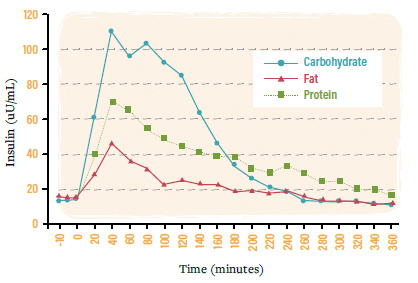
Source: Our book “Keto.”
Insulin does two things. It helps store fuels (fat and glucose) into the tissues. Either muscle (glycogen) or adipocytes (fat). It also acts as a net to hold back fat or glucose from being released from the fat cells or muscle. This makes sense because if you have a large amount of glucose or fat coming in through the meal, the body doesn’t want an oversupply of fuel in the blood so it stops adding fuel (stops lipolysis) and starts storing it to lower the blood fuel levels.
But there is also a lesser known process for storing fat and that is Acylation-stimulating protein (ASP). This is a process that helps put fat into storage when insulin levels aren’t very high. But there is a threshold level of basal or fasting insulin to enable ASP to function properly. If you have very low basal or fasting insulin levels and eat lots of fat, the fat has trouble getting into storage where it belongs. So the fat accumulates in the blood and results in very high triglycerides. Over time, if you continued doing this (or kept doing a fat fast, etc.) the body would scramble to find places to but the fat and it would get stored everywhere in the liver, pancreas and other tissues, that visceral fat that is so detrimental for health. Not a good idea.
CLICK HERE for an article with an example of this exact scenario that happened when our friend Mike did this exact experiment and saw his triglycerides go through the roof.
Also important to note is the rate of uptake of these process oils. MCT oils and drinking calories enables you to drink a large amount of fat very quickly. This floods the system with energy that it struggles to deal with. In nature we don’t have this scenario. You don’t eat pure, refined liquid fats. You eat foods like protein that contain whole fats. The whole fats you have to chew and it slows how much can be eaten in a sitting. In that way these refined oils can be looked at as very much like processed foods. Highly refined, loaded with empty calories and devoid of micronutrients.
So you are probably saying “but I am above my fat threshold, I still have 40 pounds to lose”. Yes, in that case there would likely be enough basal insulin to store the fat eaten. If weight loss is your goal, storing a bunch of fat into your fat cells is not what you want to do. You want a negative fat flux (more fat coming out of adipocytes than going back in, we explain fat flux in detail in our book “Keto.” HERE). In addition to these issues, you are not getting enough protein so you are losing that precious lean mass over time. Not what we want as we age or for our BMR levels.
Third, fats are devoid of essential nutrients.
Instead of drinking a cup of fatty coffee of butter, cream and coconut oil, I personally would eat a steak that actually gives me the satisfaction of chewing as well as nutrients to fill my body! Just look at how many nutrients you get from whole foods compared to a fatty coffee for the same 400 calories.
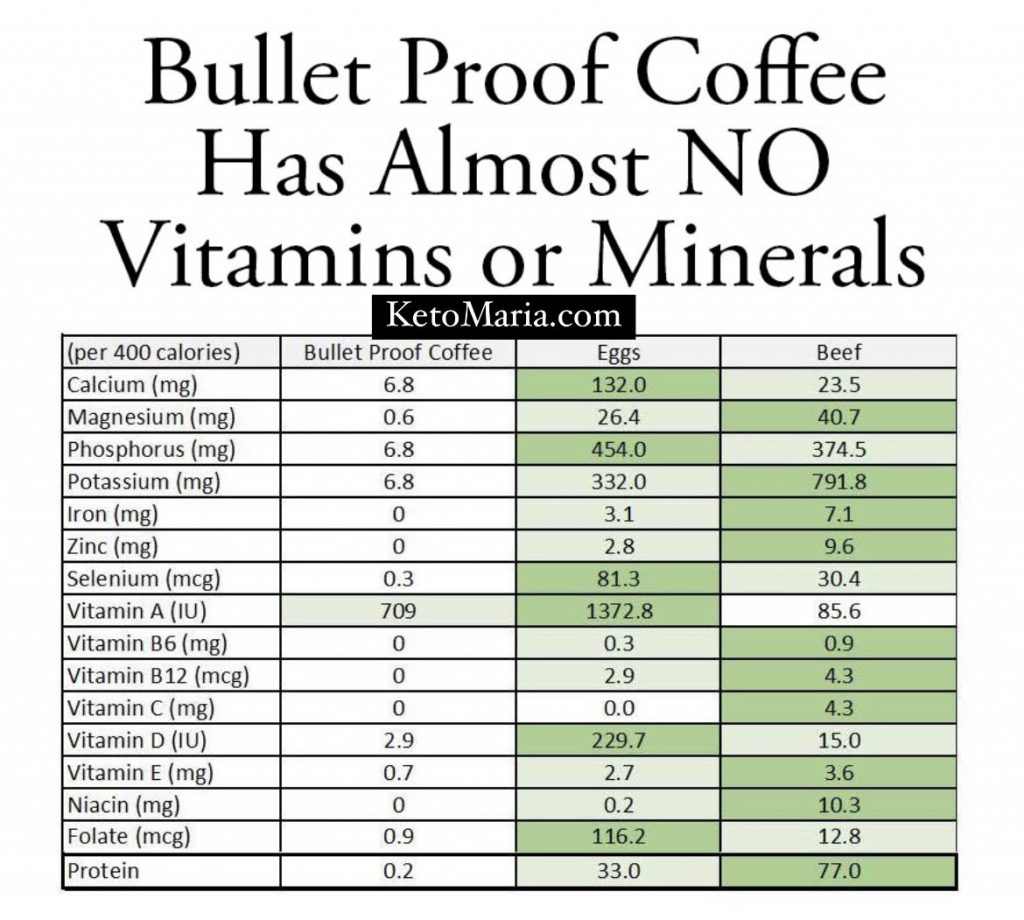
Other than a little vitamin A, the fatty coffee has almost zero vitamins and minerals compared to the eggs and beef. It’s not even close!
Eggs and beef, provide much more vitamins, minerals and complete proteins. It is time to ditch all the products like MCT powder, fat shots, fatty coffee, fatty lattes and fatty drinks in general. Even if you are in maintenance. You don’t need empty calories. Stick with whole foods and all the vitamins and minerals that come with them. You will always have better long term health eating more nutrient dense foods.
We are not saying to fear fats. We don’t fear fat and in maintenance consume lots of healthy fats from fatty ribeyes and meats, some dairy in sauces, etc. But when fat loss is the goal and your body is already high fat, your diet doesn’t need to be high fat. Let your body use your own stored fat for fuel instead by dialing the dietary fat down.
We do not recommend Fat Fasts for anyone. There are no real benefits and only negatives.
2. EGG FASTING
Egg fasts were quite popular for a while. But we don’t recommend them as there are a couple issues with them.
One problem with egg fasts is that it’s really hard to get enough protein. You need about 0.8 times your lean mass in protein grams per day to maintain muscle and lean mass. For a woman that is 5 foot 4 inches and 150 pounds with 30% body fat, that is 105 pounds lean mass (150*0.7). So 0.8 times 105 is 84 grams of protein per day. This would be the goal or minimum protein needed to maintain lean mass. If you want to gain muscle, you would want more. Also, if you are over 50 years old you start needing more protein just to maintain as there is a leucine shift (leucine is the amino acid primarily responsible for stimulating muscle protein synthesis or building muscle). So you need 0.9 and 1.0 times lean mass over 50 and 60 years old just to maintain. So in general, for a typical height woman, you want closer to 90-100 grams protein a day. Our calculator HERE factors this in automatically based on age.

So to get a proper amount of protein a typical man would need about 24 medium sized eggs in a day! A woman would need almost 18 medium sized eggs to get 100 gram protein! That is a good way to get sick of eggs really quickly.
That leads to the second issue with egg fasts. You get really sick of eggs quickly. I love eggs. But even with how much I love them, I would be sick of them after 1-2 days of eating 18 eggs a day. And that is a pity because eggs are loaded with nutrients and great for your health.
Finally, the reason some people lose weight eating egg fasts is because they just get sick of eggs and under eat protein as a result. If you only eat 8-9 eggs for the day, you are only getting 40-50g protein. This will result in losing muscle over time which can move the scale, but isn’t what you want.
The most effective thing egg fasts do is make you sick of eating eggs. So instead of doing an egg fast, look into protein sparing modified fasts (below) which will give you even better results while eating a really tasty variety of foods instead of making you sick of eating eggs.
Click HERE to find our FREE Keto Calculator to find your personal macros!
We don’t recommend egg fasts as you will just get sick of eggs. While eggs are a decent food when it comes to macros and nutrients if you eat enough of them, there are other ways (like PSMF) that work even better for fat loss while getting the nutrients your body needs. And you won’t end up hating eggs!
3. EXTENDED FASTING
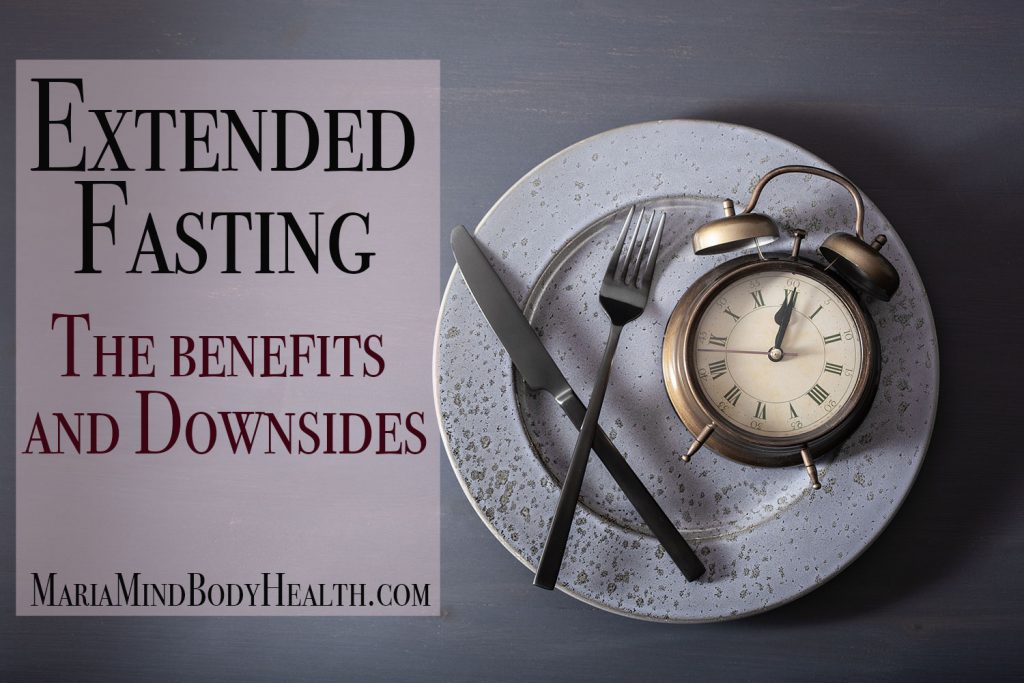
Extended fasts are fasts with little to no calories for longer than 24 hours. They are quite popular in several communities and with some experts.
Some extended fasting practices recommend only eating every other day. This may cause a drop in weight; however, like mentioned earlier, some of that loss will be muscle loss, not what you want.
Many times, extended fasting gurus don’t put a focus on what to eat when not fasting. As long as you don’t eat for days, you are extended fasting. Some people break their fast with unhealthy foods such as pasta or bread. This snowball of dieting will have even more detrimental effects. Putting your body in and out of ketosis like this can results in robbing more muscle by the body wanting to use glucose, running out and cannibalizing even more muscle before you are keto adapted as which point muscle is preserved. Studies like THIS one have shown this including this study that showed people lose over a pound of lean mass in the first day or two of fasting, then about 1/4 pound per day after that. So if starting the fast keto, you might be able to assume you will lose 1/4 pound lean mass per day from the start (instead of over a pound at first). But even if this is true, 1/4 pound of muscle is significant.
The reason many people do extended fasting is to enter a stage of autophagy. Autophagy is when you turn over bad or damaged cells. The body takes the cells apart, removing any damage and rebuilding new cells from what is left. This can be an effective tool for people who are very sick with illnesses such as cancer, organ damage, etc. The body can in some cases turn over these bad cells and make new healthier ones. Fasting also induces more apoptosis which can be even more helpful in these cases. Apoptosis is where the body kills and removes damaged or bad cells that cannot be recycled.
But there is way too much put into autophagy from fasting gurus. It is put out there as “the fountain of youth” and you only get the benefits of it when eating nothing for long periods. This just isn’t true. First, autophagy is happening all the time are varying levels. Yoshinori Ohsumi, the Nobel prize winner for his research on autophagy, estimates that we turn over all our protein cells in our body in 2-3 months. And that is for an average person doing NO fasting! Another study estimated that up to 20% of our daily basal metabolic rate (BMR) is from autophagy.
And guess what stimulates autophagy as much if not more than fasting? Exercise and strength training! And you build muscle instead of losing it! THIS study showed that exercise increased autophagy in the brain and peripheral tissues. THIS study (and THIS one, and THIS one and many others) show the increase in autophagy from exercise. In THIS study subjects got continuous glucose infusions while doing exercise and had greater autophagy signaling than those doing a 36 hour fast. Exercise intensity is more important than diet (fasting) for activating autophagy as THIS study shows. It states, “the most effective strategy to activate autophagy in human skeletal muscle seems to rely on exercise intensity more than diet”. I personally would rather eat a filet mignon for a lean protein boost and lift weights to enhance my cellular health.
Also, we store toxins in our fat cells. When we lose body fat, the toxins get released into the bloodstream. One of the primary ways these toxins get detoxed is through the stool. This is why it is so important to have a bowel movement every day, especially when losing body fat. So what happens to all these toxins when you aren’t eating anything and thus not going #2? They get reabsorbed into the body. Not healthy and can lead to accumulation of bad estrogens (estrogen dominance) and other toxins.
Extended fasting may be a helpful tool for someone with cancer or a serious illness that wants to purge unhealthy cells; however, if weight loss is your goal, extended fasting will just result in making you weaker with less muscle mass. Less muscle mass means a lower BMR so you will need less calories just to maintain your weight. So as with anything, your goals are important. For fat loss, general health, or keeping disease away, eating a well formulated ketogenic diet is what you want. Long Term Fasting isn’t needed.
We don’t recommend extended fasting for weight loss or general health. The negatives out weigh any small benefits from autophagy. If autophagy is your goal, do some strength training and exercise instead.
4. INTERMITTENT FASTING
Breakfast isn’t the most important meal of the day … “breaking your fast” is!
I remember when I first heard about “intermittent fasting.” I thought, no, no, no. This is not good for anyone who wants to maintain their muscle. But after diving into what happens when you fast on a well-formulated keto-adapted diet, I realized that not only do you maintain your muscle, but there are other benefits as well. I now work and write early in the morning in a fasted state for about three hours and my mind has never been clearer. In this state your ketones will likely be higher which can lead to more mental clarity.
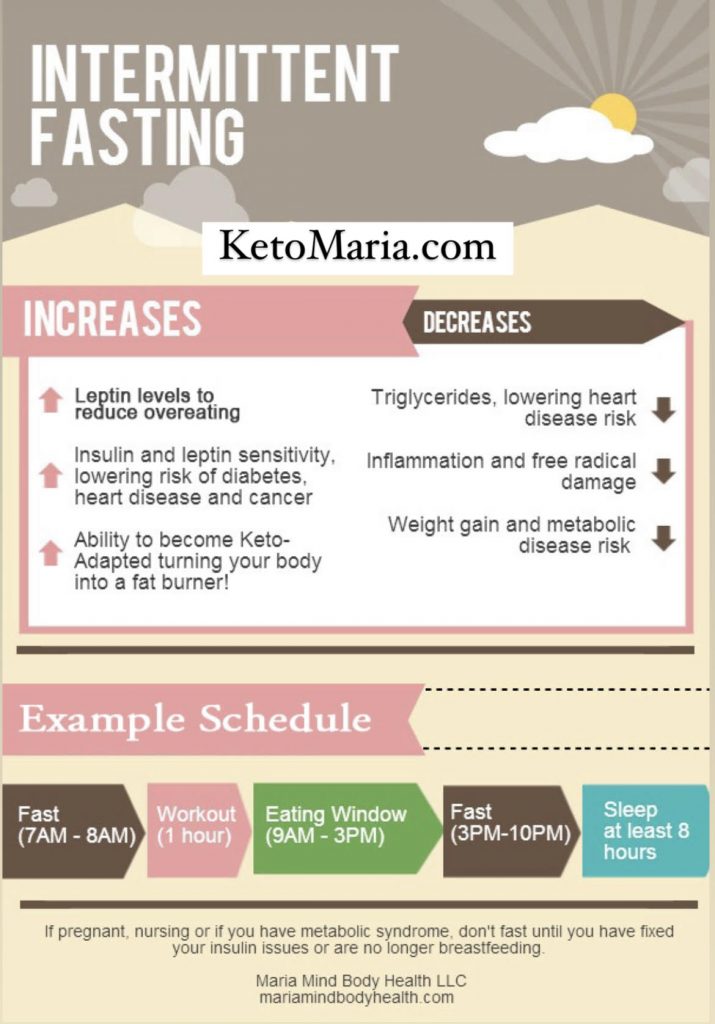
Intermittent fasting came into my life almost by accident. When I started eating keto, not only was I losing weight, but I was no longer “hangry.” When you are eating the highest nutrient-dense foods like animal protein, organic egg yolks, and organic organ meat, your cells are satiated. When your hunger and cravings subside, eating a ketogenic or carnivore diet, intermittent fasting just comes naturally as you aren’t as hungry.
Intermittent Fasting is not a diet. It is a pattern of eating. You can eat very poorly while practicing intermittent fasting, which isn’t going to be very helpful for your goals or your health. Intermittent Fasting really isn’t as drastic as it sounds. When you sleep, you are starting to fast a little.
I know this may sound impossible. What I find interesting is that with most dieting, the mental part is easy but the physical part is hard. What I mean by that is knowing you need to cut carbohydrates and gluten is easy, but the physical act of making those changes is the hard part. With fasting, it is the mental part that blocks many clients from even trying it. It sounds impossible, so they don’t even try. I was there, too. I did not like the idea of fasting or at least I thought I didn’t. I liked eating. But since I was a sugar burner, I always wanted to eat. Now that I’m keto-adapted, I save so much time by not being plagued by thoughts of food all day. So intermittent fasting comes easy once you are keto adapted.
We recommend Intermittent fasting for most people looking to lose weight. Intermittent Fasting can be a good tool for limiting snacking and getting your macros right for fat loss. It comes naturally for many people starting out with a keto or carnivore diet. They just aren’t as hungry all day so eating 2 meals instead of 3 just makes sense.
But, it isn’t required to lose weight. Getting macros right is the most important thing for that. It is just a tool to help you get your macros right and can be helpful for those starting out to limiting snacking. Many people find that once they reach maintenance, they need or want less intermittent fasting.
5. PROTEIN SPARING MODIFIED FASTING
The idea behind a protein-sparing modified fast (PSMF) is to reduce energy (carbs and fat) as much as possible while still hitting your protein goal or even getting a bit more protein than your target. PSMF forces your body use even more stored fat for fuel which helps break stalls or accelerate weight loss and healing results. Plus PSMF helps keep you feeling full, while also giving you the added benefit of the high thermic effect of food with protein, which means that you effectively lose 25-30 percent of the calories you take in.
But you don’t want to do zero fat. You need a little fat to ensure that you keep your hormones happy and that fat-soluble vitamins (A, D, E, and K) get absorbed. About 30 grams of fat will be enough to keep making healthy hormones and ensure you absorb fat soluble vitamins. Some PSMF days might dip to the low 20’s in grams of fat (like in our meal plans in The Art of Fat Loss HERE) but that is why PSMF days are only recommended to be done 2-3 days in a week and then regular keto fat loss macros the other days. Lowering the dietary fat this much forces the body to use more stored body fat for fuel, exactly what you want for weight loss.
PSMF is something we typically have clients do a couple days a week, then regular keto eating the other days. For example, let’s say a woman weighs 170 pounds and has 38 percent body fat, which means she has 105 pounds of lean mass. Her macros would be 20 grams or less of carbs, 105 grams of protein, and 30 grams of fat. As you can see, this is like fasting while preserving lean mass because she is only getting about 770 calories, though only about 665 of those calories are useful because of the thermic effect of food. She will get enough protein to preserve important lean body mass, but she will have to use a lot of stored fat to fuel her body. This is what makes PSMF such a great tool for accelerating weight loss or breaking a stall.
Eight to ten years ago, Maria called this practice a “pure protein day.” Back then, we hadn’t heard of PSMF. We just knew the properties of the thermic effect of food and how our metabolisms worked, so we knew this could be helpful for people to lose weight faster. PSMF is becoming more popular and well-known and is a great tool for improving results. We have two ebooks that include PSMF meal plans. The Art of Fat Loss and the Protein Sparing Modified Fast cookbook.
My favorite part of Protein Sparing Modified Fasting is that is is filled with nutrients! Protein Sparing Modified Fasting include mostly animal proteins which are the most nutrient-dense foods! So we burn lots of body fat, while maintaining muscle and getting nutrient dense foods too!
PSMF is a tool. It is something you can do occasionally for speeding up fat loss or breaking a stall. You implement 1-3 days in a week of PSMF macros then your regular fat loss macros the other days. It is also a good idea to do an overfeeding day on these weeks too to shake up the metabolism (more on that in a post going out soon about metabolic adaptation and the starvation mode myth).
If you are already very lean, PSMF probably isn’t for you. PSMF is a tool to force the body to burn more of its own fat for fuel. So if you don’t have a lot of body fat, it will not be fun doing a PSMF and you don’t need to do them. Unless you are a body builder looking to cut before a competition.
What I find strange is that some people will say PSMF is dangerous or unhealthy and then those same people will say that extended fasting is ok on occasion. PSMF is literally just an extended fast without losing lean mass. This is an improvement on extended fasting. So if extended fasting is OK on occasion, then PSMF is simply a less extreme and healthier option than extended fasting.
Protein sparing modified fasting is great for:
1. Gastric bypass patients: focusing on real protein rather than harmful whey protein shakes.
2. Patients with Insulin Resistance and Type 2 Diabetes: The best way to reverse insulin resistance is to shrink fat cells while maintaining or growing muscle. Protein sparing modified fasting helps shrink fat cells fast and ensure you won’t lose muscle like with an extended fast!
3. Men and women looking to speed up fat loss and break stalls.
4. Bodybuilders and fitness competitors looking to shed body fat or cut before a competition.
We recommend Protein Sparing Modified Fasts to anyone looking to lose body fat, break a stall or just speed up their fat loss results. This is a fat loss tool, so if you are lean and don’t want to lose body fat, PSMF is not for you.
Click HERE to learn more about Protein Sparing Modified Fasting. Our New Class goes into all the details you need to understand PSMF or Pure Protein Days!
If you want to watch us discuss the 4 types of fasting and which one is best for you, subscribe to our new YouTube Channel so you never miss a video, and comment below on what video we should make next!
Click HERE to subscribe to our keto YouTube Channel and tell your friends! Its a FREE and fun way to learn keto!
TESTIMONY OF THE DAY
“I truly owe my life to you Craig… from the first DM I sent you on facebook I never thought you would reply. No one ever did. Not only did you reply but you helped me out of the kindness of your heart. There needs to be more people in the world like Yourself and Maria. If you ever need anything please let me know. Had you not helped me I would probably be in assisted living now on a fast track to death. Or already dead. Thank you so much! No one has ever helped me in such a way. No amount of money could ever repay you.
Late last summer early fall I weighed 604 pounds. I tried weight watchers and bad keto. It didn’t last. Through the winter my depression got worse and ended up gaining weight. A few months ago I was 647 pounds.
Yesterday I finally hit 547. It was all through the help of Keto Adapted – Maria Emmerich and Craig Emmerich! Much love two both of you.
️ I am very self conscious posting these pictures because I do not feel like I’ve accomplished much as I don’t see a huge difference in appearance.
Truth be told being down 100 pounds and eating Emmerich Keto has allowed me to get off all pain meds for a herniated disc. ( yes I still take Advil from time to time) By pain meds I mean Vicodin. The doctor has also reduced my depression and anxiety medication. Tapering off a little every month.
Later in April I need my blood pressure checked, hoping to be taken off some of that medication. I do not always sleep great but do notice an improvement in my sleep with my PTSD. In the picture taken today I am wearing jeans, I haven’t been able to that in awhile.
I know I have a long way to go and 100 pounds for me may be like 5 pounds for some.
If you made it this far thanks for reading and I hope you are having success, and if not give the Emmerich’s Keto a fair shot. I hope everyone has a terrific weekend!! ️” – Tyler
Most people I consult are doing keto totally wrong. Get fast results with the my NEW Keto Packages!
Click HERE to check out my NEW Keto Packages!
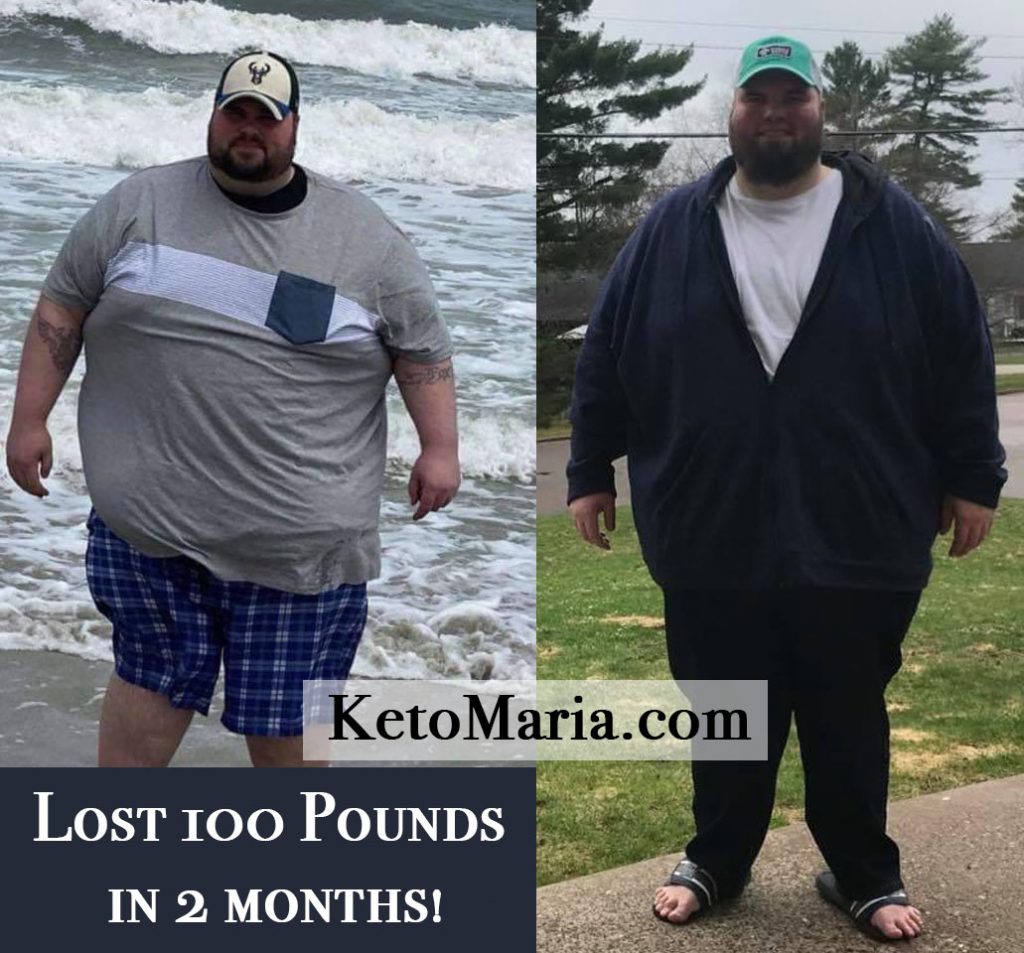


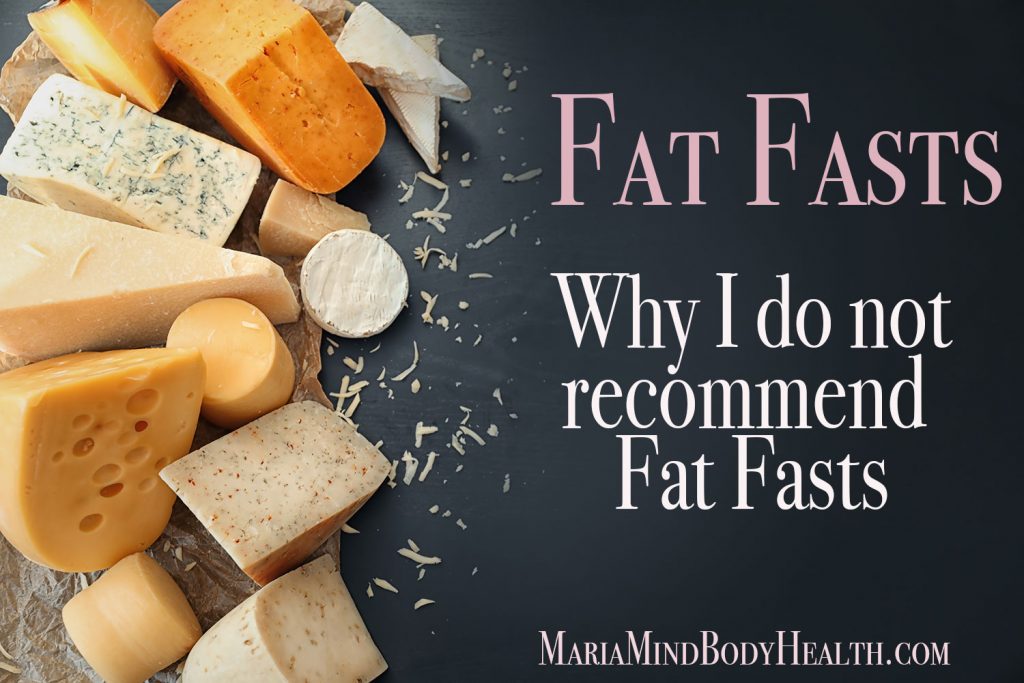



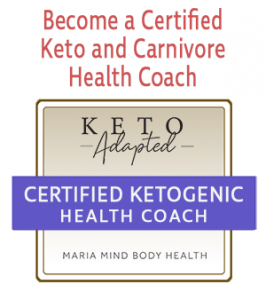




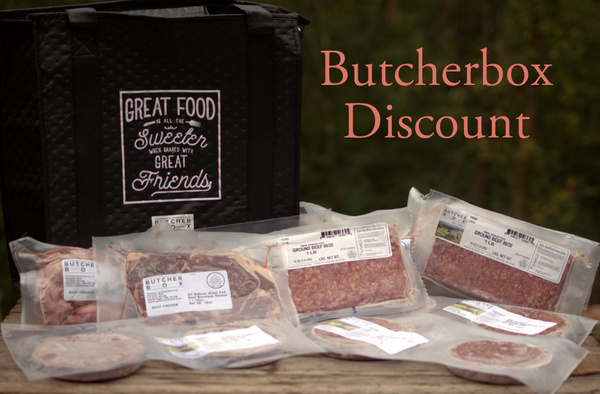

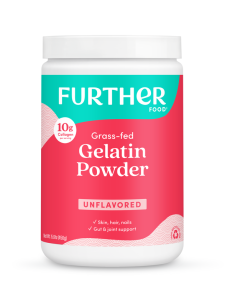

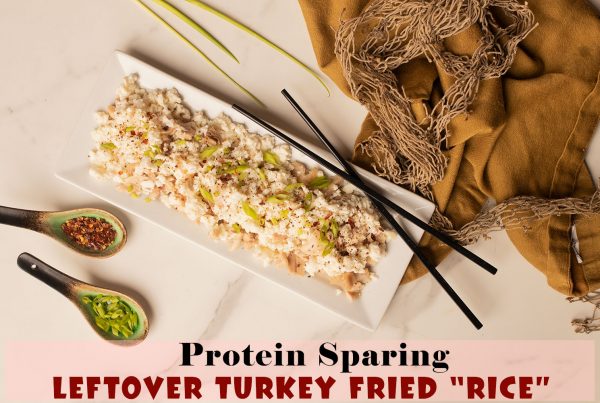


Love all of your great info and how simple you make it. I would love for you to talk on building more muscle once you are in maintenance. I am 52 and did the keto diet only to get healthy, not for weight loss, although I did drop 10 pounds. Now I am very lean, want to put on more muscle and find a way for my skin to look better….your skin looks older when you lose fat! I have been working out for 20 years and lift heavy. Can you please also discuss max protien levels and supplements that can be helpful. Thank you for the wealth of knowledge you both share and also for sharing your family life.
Ditto! 60 this year and thinking same things!
Thanks! Strength training to failure and getting lots of protein is how you build muscle. I would shoot for at least 1.0 to 1.2 times your lean mass in grams of protein a day and make sure to have a protein meal close to your workout. 🙂
Interesting post, as always. But I came to say: Well done, Tyler! One can definitely see the difference. You’re doing a great job, keep at it!
He is doing amazing! 🙂
Great information. Based on my reading on the subject of fasting, I want to let you know that, I believe that your body is designed to use fat as an energy source when your liver is depleted of glycogen. It is an efficient fuel source compared to glucose. You will not start to use your muscle, since the fat is there for that reason in addition to insulation. Animals and humans go through cycles of feast and famine and their bodies were designed to maximize survival.
Yes, of course the body uses fat when fasting. But there are certain things in the body that require glucose daily. Brain neurons, red blood cells, etc. So that glucose has to come from somewhere. When keto it comes from the few carbs you do eat and gluconeogenesis (GNG, from protein you eat). When water fasting, the only choice the body has is to use your muscle to send through GNG to make glucose. That is why you lose a little lean mass every day of a water fast.
You are right, and the body does not use lean protein for its glucose needs. There are lots of other protein sources in the body that it will use first.
No there isn’t. The only places the body can pull protein from are the organs (which it will never do as they are too precious), the bones (also too precious), the skin (which it always has to make new every day due to shedding so wouldn’t make sense to pull from there when it always has to make more), or the muscle which it can afford to lose some without major issues. So yes, it will pull the tissue that will cause the least problems and that is your muscle.
Tyler, thank you for the courage it took for you to share your story with us all. What an inspiration you are! Please check in with us occasionally so we can cheer you on! It’s also refreshing to hear about the way Craig reached out to you. It reveals their hearts to make a genuine difference in people’s lives rather than
to build an empire for themselves. This was a wonderful post! Very informative and inspirational. Thank you!
Thanks! He is an inspiration! 🙂
Excellent post…as always, great information! But, this shout-out is for Tyler – you are doing awesome! Yes, we can see the difference, that’s a huge loss! Be proud of you! Keep it up, one day at a time.
Thank you!! Yes, Tyler is an inspiration! 🙂
I love the information Craig and Maria freely share. Hearing stories of how people are, not simply loosing weight they are changing their lives, is so inspiring. I started Keto the Saturday before Christmas with a 10 pound goal. I have lost 9. The weight loss is fun because I enjoy my clothes more. However, the fact that this former bulimic girl no longer graves sugar everyday is the biggest gift! I feel 10 years younger, I no longer wake up aching, I think clearer, and my energy …well it’s 5:50am and I headed out for my first of two 3 mile walks. At 55 I finally feel free of food bondage and diets! Thank you Lord, and thank you Maria and Craig!
Way to go!! Thank you so much! 🙂
Hi Maria! I’ve been following you for years and have all of your cookbooks. I’m just restarting the Cleanse after getting off track. I’ve experimented with alternate day fasting and longer fasts. I would fast for 3-4 days and never get hungry. My blood ketones stayed high, I felt great. If I go back to eating 1-2 meals a day, I can’t rely on hunger signaling. I also eat too much and don’t do well with portion control. Fasting has helped to balance that. How can I lose weight eating more, esp if my body isn’t signaling hunger or satiety? Thank you!
Also – go Tyler! Loved reading your story.
Try protein sparing modified fast. You get all the benefits of longer fasting without the negatives of losing lean mass. 🙂
Yes, I have the PSMF cookbook but I thought that was only to be used sparingly, maybe 2x a week? What should the rest of the week look like? Thank you for clarifying!
Yes, like 1-3 days a week as needed to break a stall or speed up results. Just like you wouldn’t do an extended fast every day either.
On the other days you just do your regular keto weight loss macros like our calculator gives you here:
https://mariamindbodyhealth.com/calculator/
I am so excited to read about the Overfeeding days when you post it! How much protein/fat/calories for those days, etc. I keep checking your website, but I don’t think you’ve posted yet…
I signed up twice to be notified of new posts…but I don’t think it’s working.
Thank you for all that you do!
That post is planned for May 25th right now. 🙂
I’ve been doing Emmerich keto for around 6 months and feel great. I’ve lost almost 40 lbs and my A1c is now normal. I stopped taking the statins and my cholesterol has climbed to 285. My heart scan put me in the moderately high risk category. Should I go back on the statins?
For cholesterol, watch these videos:
https://m.youtube.com/watch?v=jZu52duIqno
He shows how he manipulates his cholesterol based on how much fat he eats.
If you really want to know your heart disease risk, look at CAC score. Calcium score is a cheap (usually $100) and easy test that measures the plaque buildup in your coronary arteries. The score given correlates to heart disease (and overall death risk) by orders of magnitude better that total cholesterol every does. Total cholesterol is only a couple percent correlation in the statin companies own tests. CAC score of 1000 (vs. 0) correlates at 800% increase in death risk!!
http://www.thefatemperor.com/blog/2016/8/10/repeat-after-me-calcification-score-blows-away-risk-factors-always?rq=cac
Also watch this about statin drugs:
https://www.youtube.com/watch?v=yX1vBA9bLNk
And this at 22 minute mark especially about what causes heart disease:
https://www.youtube.com/watch?v=DpZIXWpN1og
Also watch this:
https://thefatemperor.com/dave-feldman-with-shocking-nhanes-data-on-ldl-cholesterol-and-mortality/
Statins raise risk of Osteoporosis by 400% because statins are vitamin K2 inhibitors.
https://www.ncbi.nlm.nih.gov/pubmed/25655639/
Also, statins raise risk of diabetes by 33%:
https://drc.bmj.com/content/5/1/e000438
The marker we look for is triglyceride to HDL ratio. You want it 2.0 or less, ideally 1.0 or less.
We have some great info on cholesterol in our conference replay if you want to learn more here:
https://keto-adapted.com/keto-adapted-virtual-conference/
I bought the PSMF book and have gone through it thoroughly. No stranger to the lifestyle, it all looks great and I’m ready to dig in. Just one question. I noticed a few recipes use almond milk. I have access to as much coconut milk as I want at no cost and was wondering if I can sub this for the almond milk? Also, too much almond and my stomach gets really grumpy with me. If I could limit my consumption it would be preferable. Looking forward to this next step in my journey!
Thank you for all you do!
Yes, as long as it isn’t significantly higher in fat. 🙂
I see info in your cookbooks about how nutritious herbs are, but I am confused about how much to consume in order for them to be effective. For instance, how much basil to relieve gas and stomach pain? How much mint to relieve indigestion or IBS symptoms? How much turmeric to help relieve inflammation? And is fresh or dried best? Is there a guide somewhere with this info? Thank you for any help and for all you do to promote good health!
Animal proteins are very nutrient dense too. So just add herbs and spices to taste to spice things up and add a bit more nutrients. 🙂
For the symptoms you describe, going dairy and nut free keto alone will help in most situations. 🙂
This was very Interesting thank you !
One question, Does long acting insulin hinder weight loss when doing keto and PSMF?
I seem to be getting no where.
You have to find the right amounts of insulin to use but over time if you get the dosing right and macros right, you will lose weight if keeping fat down in diet (and of course carbs). 🙂